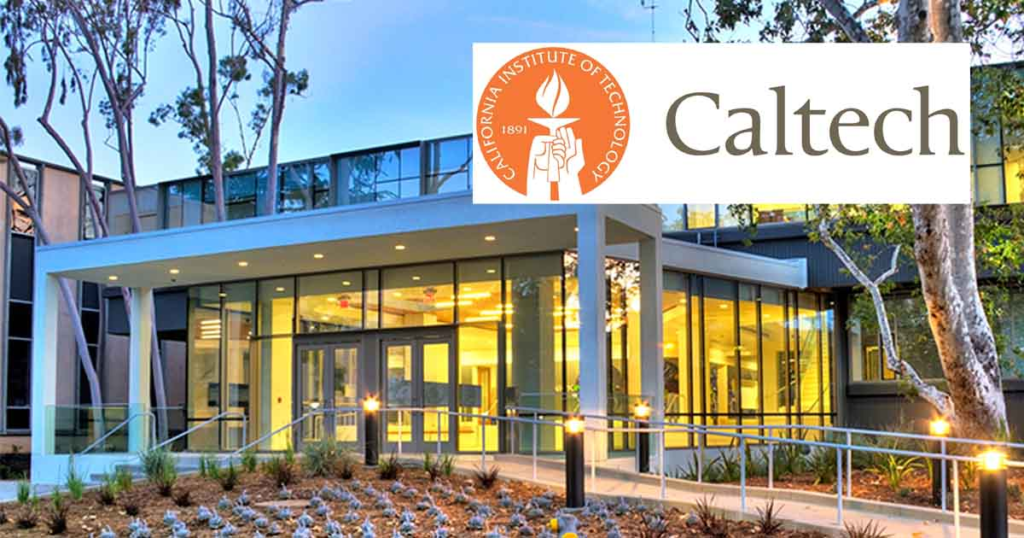The California Institute of Technology (Caltech) is renowned globally for its pioneering contributions to science and engineering. Located in Pasadena, California, Caltech is a prestigious private research university dedicated to advancing knowledge and fostering innovation. Known for its rigorous academic programs, groundbreaking research, and culture of intellectual curiosity, Caltech has established itself as a leader in scientific discovery.

A Brief History of Caltech
Caltech was founded in 1891 as Throop University by local businessman and politician Amos G. Throop. The institution initially offered programs in manual training and liberal arts. In 1920, the university officially adopted the name California Institute of Technology to reflect its growing focus on science and engineering.
Under the visionary leadership of figures like Robert A. Millikan, a Nobel Prize-winning physicist who served as the university’s president, Caltech transformed into a center for cutting-edge research. Millikan played a key role in attracting top scientists and shaping the institute’s commitment to scientific inquiry.
Academic Structure and Programs
Caltech is organized into six academic divisions:
- Biology and Biological Engineering
- Chemistry and Chemical Engineering
- Engineering and Applied Science
- Geological and Planetary Sciences
- Humanities and Social Sciences
- Physics, Mathematics, and Astronomy
Despite its small size—approximately 2,400 students, including undergraduates and graduates—Caltech’s academic rigor is unmatched. The student-to-faculty ratio of 3:1 ensures close interactions with leading experts and researchers.
Undergraduate Program
Caltech’s undergraduate program is known for its demanding coursework and emphasis on the fundamentals of science and mathematics. Students typically pursue degrees in STEM fields, with popular majors including physics, engineering, computer science, chemistry, and biology. The Core Curriculum includes courses in mathematics, physics, chemistry, biology, humanities, and social sciences, providing a well-rounded foundation for scientific study.
Graduate and Research Programs
Caltech’s graduate programs are equally prestigious, offering master’s and doctoral degrees across a wide range of scientific disciplines. Graduate students engage in advanced research, often collaborating with faculty on groundbreaking projects. Research at Caltech is facilitated by world-class laboratories, research centers, and partnerships with institutions like NASA’s Jet Propulsion Laboratory (JPL).

Research Excellence and Achievements
Caltech has a profound legacy of scientific breakthroughs and innovation. Notable achievements include:
- Nobel Prize Winners: Caltech affiliates have received 46 Nobel Prizes, with contributions in fields like physics, chemistry, and economics.
- Jet Propulsion Laboratory (JPL): Managed by Caltech for NASA, JPL leads space exploration missions, including the Mars Rover projects and interplanetary spacecraft missions.
- Gravitational Waves Discovery: Caltech researchers, in collaboration with MIT, were instrumental in the first direct detection of gravitational waves by the LIGO (Laser Interferometer Gravitational-Wave Observatory) project in 2015.
Notable Research Centers
- Kavli Nanoscience Institute: Focuses on advances in nanotechnology.
- Seismological Laboratory: A leader in the study of earthquakes and seismic phenomena.
- Beckman Institute: A multidisciplinary research hub for biology and chemistry.
Campus and Facilities
The Caltech campus spans 124 acres in Pasadena, featuring state-of-the-art laboratories, libraries, and research centers. Iconic facilities include:
- Athenaeum: A historic meeting place for scholars and visiting dignitaries.
- Beckman Auditorium: A hub for lectures and cultural events.
- Millikan Library: One of the tallest buildings in Pasadena, serving as the main library.
Caltech also maintains strong connections with nearby institutions like the Huntington Library and NASA’s JPL, enhancing collaborative opportunities.
Student Life and Culture
While academics are a primary focus, Caltech offers a vibrant campus life. The university is known for its unique House System, where undergraduates live in self-governing communities, each with its traditions and culture. The Houses—such as Avery House, Blacker House, and Ricketts House—foster camaraderie and a collaborative spirit.
Traditions and Activities
- Ditch Day: An annual event where seniors organize elaborate puzzles and challenges for underclassmen.
- Pranks: Caltech students are famous for their creative and intellectual pranks, including the legendary “Hollywood Sign” prank in 1987, where they altered the sign to read “Caltech.”
Alumni and Notable Figures
Caltech’s alumni network includes many influential scientists, engineers, and entrepreneurs. Notable figures include:

- Linus Pauling: Nobel Prize-winning chemist.
- Frank Capra: Acclaimed filmmaker.
- Gordon Moore: Co-founder of Intel and author of Moore’s Law.
- Richard Feynman: Renowned theoretical physicist and Nobel Laureate.
Diversity and Inclusion Efforts
Caltech is committed to promoting diversity, equity, and inclusion in STEM. Initiatives like the Center for Inclusion & Diversity and various outreach programs aim to increase representation of underrepresented groups in science and engineering.
Conclusion
The California Institute of Technology continues to be a hub of innovation, curiosity, and discovery. Despite its small size, its global impact is profound, shaping the future of science, engineering, and technology. Caltech’s legacy of excellence, commitment to research, and vibrant intellectual culture ensure it remains a beacon for aspiring scientists and engineers worldwide.